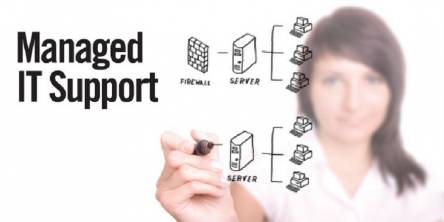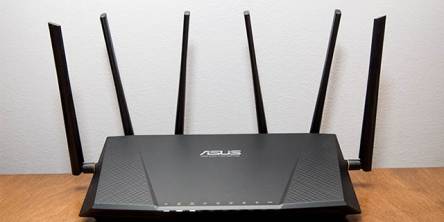How Brite Box Switch Is Changing the Networking Industry?
The networking industry is making an important move toward open switches. The media is also giving attention on mega-scale do-it-yourself switches, such as Google's in-house switches.
Open switches: These are the switches in which the hardware and software are separate entities that can be changed independently of each other. The same hardware can support multiple operating systems also same operating system can be run on various hardware configurations. However, in closed switches the hardware and software are always purchased together. For example, if you buy a Juniper EX or MX you also buy JUNOS.
Open switches has produced a small lexicon that can be confusing to newcomers, they wonder what the difference is, between white box switches and bare metal switches, and whether the differences really matter or are just a marketing overlay.
White box switches: A white box switch differs from a metal switch that comes with an operating system installed. It's an open switch because the OS and the hardware are not incorporated as they are in a black box switch. Basically a white box switch is a package of a bare metal switch and an operating system.
Brite box switches: Brite box stands for BRanded whITE box. This switch also is made by an ODM, and is often the same switch presented by the ODMs as bare metal switch, but it supports a front bezel with a brand name of any reputed IT company. And therefore it is called as Branded white box.
Are brite box switches right for the network industry?
Network engineers can reduce costs and improve management by using a brite box switch in their data centers. Still, this approach is not a universal fit. The key tenants of a brite-box are disaggregation which means the hardware and software/OS can be de-coupled. The reduced capital cost of white box switches and commercial software provides the option to receive support/service from a single supplier.
Brite box switch really changing the network industry?
High-performance white-box switching has emerged in the hyper-scale space. Many large cloud service providers are deploying universal switching and routing hardware for the data plane of a software-defined network. They are using open-source SDN controller software for programming and orchestration purposes. In a hyper scale atmosphere, this sort of architecture delivers significant cost reduction while minimizing vendor lock-in and increasing flexibility.
Many Enterprises have shown interest in white-box switching, but very few have the ability to take advantage of it. In theses switches the hardware and software integration, procurement and support are too difficult. This has led to the development of brite-box switches. A brite box switching is a midway point between white-box switching and traditional integrated switches. “Brite-box” is a combination of two words “branded” and “white-box.”
Brite-box switches build upon software-defined concepts by disaggregating software and hardware. In some cases, Network switching vendors allow their software to run on white-box hardware, but in others cases; vendors allow other software to run on their hardware. Many infrastructure software vendors are also providing networking software to run on certified hardware switches. Giant IT Companies are now addressing this demand through their partnership plans. They are developing branded open networking switches that will run the Cumulus Linux operating system (OS).
The brite-box switching isn’t meant for everyone. With an increasing of options, this idea is most applicable to only large enterprises and service providers that make large volume purchases, and organizations that have adopted a “DevOps” approach to networking. The brite-box switches are developed to help service providers and web-scale organizations to handle power cloud, mobile, social media and big data workloads.
The tech giants are highly accepting the concept of open switches (brite box) and the normal-sized network operators are also beginning to pay attention to open switching. Therefore, it shows that the world is going to see some enormous shakeups in the networking industry in the next few years.
Similar Articles
Network security monitoring is one of the most essential aspects of IT setup integrity and safety. Given the extremely high cost of a potential data breach, investing in robust security measures is essential for any business.
One essentially cannot exaggerate the significance of data in today's high-speed world of business. Each client interaction, exchange, and so on gives significant information that holds the key to better understanding the market, calibrating operations, and staying ahead of the market
Among the many fields covered by the information and communication technologies industry (ICT) are health IT software transportation and logistics technologies GIS mapping and telecommunications technology digital content mobile infrastructure and transactions
As cloud computing continues to become increasingly relevant in the current market, more and more companies are rushing to integrate this avant-garde technology in their operations. And it is not a one-time thing; i.e. experts believe this shift to cloud computing from on-premises systems will continue for the foreseeable future.
IT managed support services have become quite popular among small-mid and large-sized businesses. The main reason for this is that they eliminate the stress of maintaining the IT systems for the enterprise and it can focus on its core business.
The modern era we live in has managed to make us revise many conventional contexts where it was formerly considered science fiction. We all know that money is a means of trading and nothing else. Yet we need it to such an extent that we have managed to enslave our selves.
We all know that EU is now facing a wave called GDPR laws. The new General Data Protection Regulation (GDPR) will take effect on May 25 in 2018. It is based on the data protection of the EU citizens. GDPR is going to deliver businesses with the clearer legal rights and structure to make sure that the data of the EU citizens are protected and are in safe hands.
WiFi networks have gained so much popularity in recent times that it's difficult to imagine any other type of internet connection in your house.








